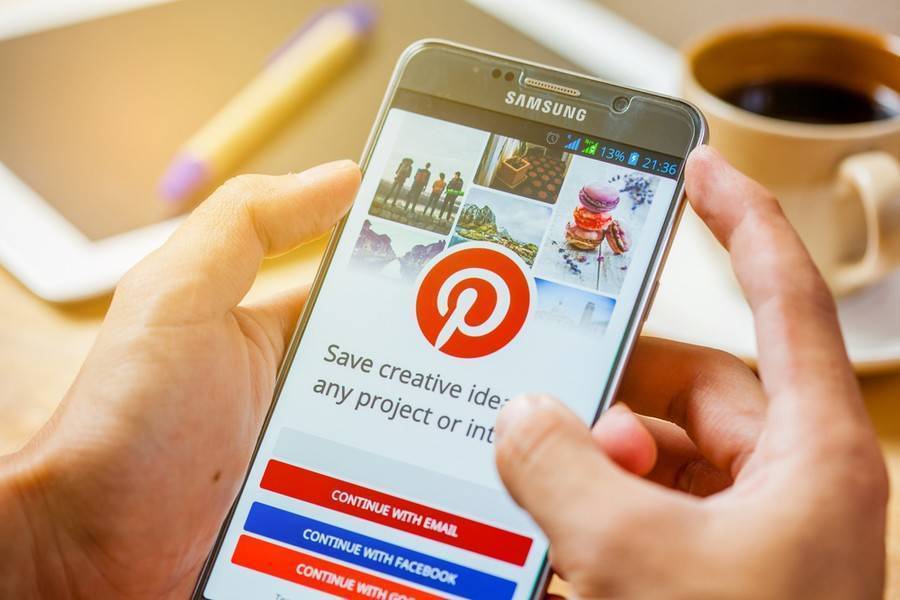Pinterest can easily be overlooked as important in social media for tour companies, but this is far from true. At its core, Pinterest is a visually attractive bookmarking site. Look at it more like a collection of people’s dream boards.
Because of the nature of Pinterest, pinners are subconsciously telling the world what they’d like to purchase, learn about, and travel to. Aspirations are pinned, revealing unique insights into the user’s demographic and psychographics (personality, attitude, opinions, interests).
Why tour companies should be using pinterest
Over 150 million users, coined “Pinners”, are actively looking for creative inspiration on Pinterest. With the right marketing approach, a tourism based company can turn a user’s dream board into actions and purchases. Some travel and tour companies report seeing more than 50% of their website’s traffic come through Pinterest. Here are some more statistics on why your business should be on Pinterest.
Pinterest can be a big referrer of site traffic. According to a study by shareaholic in 2013, it is responsible for about 5% of all website referral traffic on the web; second only to Facebook. That’s greater referral traffic than Twitter, Google+, Reddit, and YouTube combined. Considering Pinterest’s growth since 2013, today this statistic is likely to have also increased.
- 54% of Female Pinners are between the age of 34-55
- 35% of Pinner’s household incomes of over $100,000
- 120% increase in male owned Pinterest accounts in 2016
The majority of Pinterest users are in a higher tax bracket, meaning they have disposable income. Because people use Pinterest differently than other social networks (Facebook, Twitter, Instagram, Snapchat), pinners can be captured more easily right at the start of the purchase funnel.
- 87% of Pinners report they purchased a product because of the inspiration they saw on Pinterest
- 93% of Pinners report using Pinterest to plan for future purchases
What is Pinterest
Pinterest is a social media network where pinners can upload, share, save, and sort images and information. A user can create and browse boards on specific subjects and pin images that reflect the board’s topic.
Pins are images with titles and captions. They are categorized to help people look for information and inspiration on certain topics. A pin can also have hashtags, links, and a call to action. A pinner can upload their own image and caption or create a board of their favourite pins by other users, called repinning.
Pinners can also comment on pins, repin on their own boards, click for more information, or visit a website. The average pin is 100 times more shareable than a tweet, and the average pin drives between 2 and 6 unique page visits.
Pinterest also has a social media “Pin It” button that users and websites can install that allows them to pin any information or image they find on the web to a Pinterest board.
Best advice for a Pinterest Business Account
By creating a business page on Pinterest, a tourism based company can create a visual “store” of the destination and have the ability to reach an affluent, ready to buy demographic.
When designing your Pinterest board, be sure to fill in all the profile fields with good quality branded images, contact info, and a company description. Every pin should have a caption that explains why the product in the photo is useful to a customer and have a call to action. A call to action may simply be a link to purchase the product or visit your website.
It’s recommended that URLs are simplified on any social media content with tools such as Google’s free URL shorten, so that a pin’s caption isn’t displaying long, spammy looking links. Tracking can be set up on URL shortening services to see who’s clicking through and when.
Pinterest also has it’s own ad campaign program called Promoted Pins. Similar to Facebook Ads, Promoted Pins look like regular pins, but appear more frequently in categories browsed by target users. With one tap, a user can interact with a pin to learn more or go to a website to buy.
Recently, Pinterest introduced Promoted Videos. Some companies have reported that their Promoted Videos are seeing 4 times as much engagement as Promoted Pins.
Adding the Pin It button to your website allows users to easily pin content and images from your site onto their Pinterest board for others to see. It is also good practice to add a follow button to your website’s social media icons.
With Pinterest analytics, businesses can see which pins are driving traffic and engaging users. This helps you discover more about your audience and develop a more targeted campaign, both in Pinterest and in your overall marketing strategy.
Google indexes Pinterest boards making it possible for a search query to turn up a board of pins on that topic. Creating quality captions with keywords and hashtags results in more searchers finding your pins and products.
Being present on Pinterest, the third largest social media channel, increases your social signal and your site’s SEO ranking, influencing search engine ranking.
Marketing tips for using Pinterest effectively
Most tourism marketers aim to influence their target market prior to making travel plans and arriving at the destination. Unlike FB or Twitter, where users go to share their experiences, Pinterest reflects where they want to go. By using Pinterest, businesses have the chance to steer a buyer’s decision to their destination.

Because of the dream board idea behind Pinterest, businesses can identify emerging trends by watching popular pins in certain industries. This provides the opportunity to introduce products, generate new ideas, and learn more about your target market for business growth.
A tour company can use this opportunity to highlight different elements of their tours and showcase how each tour experience is unique and exciting. An accommodation company can showcase their rooms and venue, and also highlight positive guest experiences.
Because Pinterest supports hashtags, always include your creative travel hashtags.
Pinterest board ideas for tour, activity, and accommodation businesses
An excellent way to gain more credibility and traffic is to repin from other boards. This helps build relationships with other businesses by repinning relevant pins to your boards.
You can create boards that will enhance the customer experience. They won’t all work for every company, but you can see which best fits your business model. Here are some ideas:
- Campaign themed boards such as holiday campaigns
- Customer stories and experiences (Invite customers to pin on these boards)
- Tour Highlights
- Tour and activity options in the area
- Local events
- Local landmarks
- Annual festivals
- Food and Beverage recommendations (Pairing local wine or beer suggestions)
- Cultural information and/or faux pas
- Nearby shopping
- Trip planning advice
- Activities specifically for children
- Wedding destination inspiration
- Interesting and/or odd facts about destination
- Throwback board with vintage images of your company and destination (Scheduling pins every #ThrowBackThursday)
Create the perfect pin
As with any social sharing platform, a little strategy is needed in order to stand out. To create the perfect pin, you can’t just slap some text over an image and expect users to be intrigued. There are millions of pins competing for attention — make sure your pin is compelling by following these tried and true methods.

1. Use high quality images
Our eyes are drawn to beauty, which is why a striking image will improve your chances of winning over pinners. Despite the fact that smartphones have the ability to capture better photos nowadays, you may want to consider investing in photography.
Have a photographer friend come out and take a vast amount of usable photos or assign a creative staff member the photographer role. If neither is an option, there is always the stock image option, but we encourage authenticity as much as possible.
2. Think vertical
Scroll through Pinterest yourself and take note of the different sizes — you’ll be shocked to see the lack of horizontal images. This is because Pinterest formats all images with the same width. So to take up more retail space, you will want to use a vertical image.
However, taller doesn’t necessarily mean better. The pins that perform the best are not the tallest, or shortest, but rather right in the middle.
According to Pinterest, the best aspect ratio for an image is 2:3 — that is 600px wide by 900px high. You can always crop any images if you don’t have any available that fall into this size limit.
3. Add text overlay
Along with placing your logo or URL on the pin, consider playing with text overlay. Since pin descriptions are not shown until a user clicks on a specific pin, you can hook someone with a preview. Text overlay will quickly inform what your pin is about as they are scrolling through the feed.
To add text overlay, use a photo editing program like Adobe Photoshop or PicMonkey. There are various fonts to choose from, but try to stick with ones that are simple and easy to read. Also, make sure to limit your use of colors to one or two — you don’t want to distract too much from your beautiful image.
4. Remember to include keywords
To present users with the best relevant content, Pinterest has a search engine of it’s own. Similar to Google, Pinterest uses keywords to figure out what a specific post is about. The only way to ensure your content is popping up in the feed is to make sure you are including keywords in your title and description.

If you are familiar with SEO (search engine optimization), then you know that long-tail keywords perform the best. To find out what long-tail keywords to use in your pin, type your main keyword into the Pinterest search engine. An automated list of suggestions will appear under the search bar — use any of these popular search queries as your keyword — make sure it is relevant to your post.
Want more tips like this on how you can use social media to promote your tours?

Subscribe to the Checkfront Newsletter
Read new tips on how to get more bookings every month.



